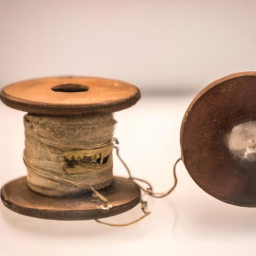
History of Tailoring and Fashion Designing

The origins of tailoring and fashion designing can be traced back to ancient times when humans started wearing clothes for protection and self-expression. Over the centuries, the art of tailoring and fashion designing has evolved, reflecting cultural, social, and economic changes. Let’s delve into the fascinating history of this craft.
Tailoring: The Art of Creating Perfect Fit
Tailoring is the process of creating custom-made garments that fit an individual’s body shape and measurements. It involves meticulous cutting, shaping, and sewing of fabrics to achieve the desired fit and style. This craft dates back to ancient civilizations such as ancient Egypt, Mesopotamia, and China.
Ancient Egyptians were known for their fine linen garments, with intricate pleats and embellishments. Tailored clothing was also prominent in ancient Rome and Greece. As societies became more sophisticated, tailors developed techniques to create garments that accentuated body contours and provided maximum comfort.
The Rise of Fashion Designing
Fashion designing, as we know it today, emerged during the Renaissance period in Europe. During this time, clothing became a form of art, with fashion designers creating unique and elaborate pieces for the elite class. One of the most prominent designers of that era was Charles Frederick Worth, who is considered the father of modern fashion.

In the 19th century, Paris became the fashion capital of the world, leading the way in fashion trends and clothing manufacturing. This period witnessed the rise of couture houses, where skilled fashion designers created luxurious, made-to-measure garments for wealthy clients.
20th Century and Beyond
The 20th century brought significant changes in tailoring and fashion designing. Industrialization revolutionized the garment industry, making ready-to-wear clothing accessible to a wider audience. Fashion designers started incorporating innovative materials, patterns, and silhouettes into their creations.
The mid-20th century witnessed the emergence of legendary fashion designers such as Coco Chanel, Christian Dior, and Yves Saint Laurent, who shaped the fashion industry with their iconic designs. These designers not only transformed clothing but also influenced social and cultural norms through their creations.
Modern Tailoring and Fashion Designing

Today, tailoring and fashion designing continue to evolve at a rapid pace. Advanced technology and digital tools have revolutionized the design process, making it more efficient and precise. With fashion becoming more accessible, designers are challenged to create sustainable and inclusive designs that cater to diverse body types and promote social consciousness.
The history of tailoring and fashion designing is a testament to the human desire for self-expression and creativity. From ancient civilizations to modern runways, this art form has continuously evolved, reflecting the changing times and shaping the way we dress.
- Ancient Egyptians and their intricate linen garments.
- Development of tailoring techniques in Rome and Greece.
- Renaissance period and the birth of fashion designing as an art form.
- Paris as the global fashion capital during the 19th century.
- 20th-century revolutions in industrialization and ready-to-wear clothing.
- The influence of legendary fashion designers such as Chanel and Dior.
- The modern era of digital design and sustainable fashion.
As the fashion industry continues to evolve, it is crucial to appreciate the rich history and craftsmanship behind tailoring and fashion designing. From the skillful hands of ancient tailors to the creative minds of modern designers, this art form plays a significant role in shaping our personal style and cultural identity.




